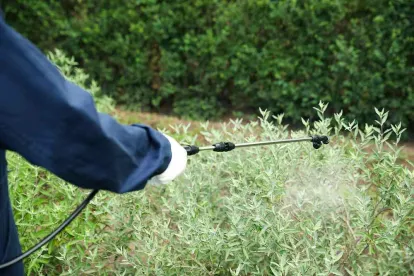On January 19, 2021, the U.S. Environmental Protection Agency (EPA) announced it will issue an Advance Notice of Proposed Rulemaking (ANPRM) to solicit information on the current pesticide exemption provision process.
EPA announced that it is considering whether regulatory and policy changes are needed to improve the exemption provisions for pesticides that may be considered minimum risk under the Federal Insecticide, Fungicide, and Rodenticide Act (FIFRA). EPA states that changes to the current process could make the implementation and evaluation of the exemption provisions more efficient.
Comments on the ANPRM would be due on or before 90 days after publication of the ANPRM in the Federal Register in docket ID number EPA-HQ-OPP-2020-0537. Although the issuance of this proposed rulemaking has been paused following the Biden Administration’s Executive Orders requiring agencies to review their rules and policies to ensure consistency with the current Administration’s environmental policies, should it proceed, it will be important for stakeholders to review carefully. Discussed below are the issues raised in the ANPRM for stakeholder consideration.
EPA states it is seeking public input on:
-
Whether programmatic changes are necessary to ease state regulation of federally exempt products; and
-
Whether EPA should consider adding any new classes of pesticidal substances for exemption.
Specific questions posed include the following:
-
Do you have any suggestions for improving the processes for initiating a review of a substance or for implementing a decision that a substance may be used or may no longer be used in a minimum risk pesticide process? Please explain how changes could increase efficiencies.
-
Are these factors appropriate for EPA to consider in determining whether a substance should be exempted from FIFRA regulation via the minimum risk exemption?
-
Are there other factors that should be considered? Please explain how these factors should be weighed in a minimum risk determination.
-
EPA broadly requests comment on the utility, clarity, functioning, and implementation of the provisions in 40 C.F.R. Section 152.25.
-
Are there other pesticidal substances or systems (e.g., peat), that EPA should consider adding as a new class at 40 C.F.R. Section 152.25 for exemption from registration under FIFRA?
-
What other factors should EPA consider in determining whether a category or class of products should be exempted from FIFRA regulation? Please explain how these factors should be weighed in a determination.
-
Have the changes to the federal program in the 2015 rule, which provided specific chemical identifiers and the labeling changes, made it easier to identify specific chemicals used in minimum risk pesticide products?
-
Are there state challenges to implementing the minimum risk program you would like to share with EPA? Do you have suggestions for improvements to the program to address these issues?
Commentary
In the ANPRM, EPA states it is soliciting information that will help determine if any changes in the regulations should be made. The ANPR does not contain specific possible changes to FIFRA exemptions. EPA states: “Should EPA decide to move forward with changes to the program, the next step would be to identify, develop and evaluate specific options for amending the current regulations in 40 CFR 152.25, and issue a proposed rule for public review and comment.” Given the change in Administrations and the current “pause” on issuance of this proposed rulemaking, it is unclear whether EPA will issue this proposal, and if so whether EPA will take further steps regarding the exemption after reviewing the comments received. Should EPA proceed to issue the ANPR, it will provide an opportunity for stakeholders to submit comments on these issues, and companies should consider identifying challenges with the current regulatory criteria and procedures, as well as potential modifications that could improve the regulatory process.
It is noteworthy that EPA received a petition from the Consumer Specialty Products Association in 2006 requesting that EPA address issues related to efficacy claims for Section 25(b) products and that EPA promised to address this petition by rulemaking or other avenues. The potential for changes to the Section 25(b) requirements thus is not a new concern for EPA, and it will be important to monitor this issue.





 />i
/>i

